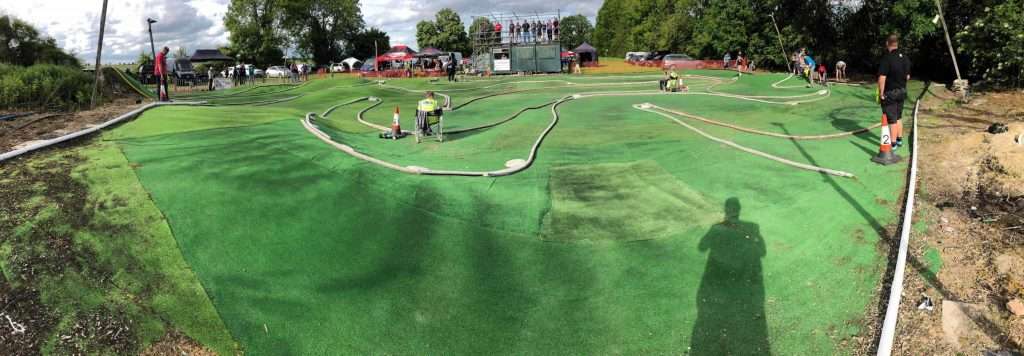Interested in RC Car Racing but don’t know where to start? Hopefully my guide to RC Car racing should answer a few of your questions!
Model Car Racing is a very popular hobby around the world, and it’s a lot more fun than racing over the local car park on your own. At an RC car club you’ll meet lots of like-minded people who can share tips and offer advice.
You can start racing RC cars no matter what your age or experience level. If you are completely new to Radio Control, racing is a good way to learn a lot more about the hobby.
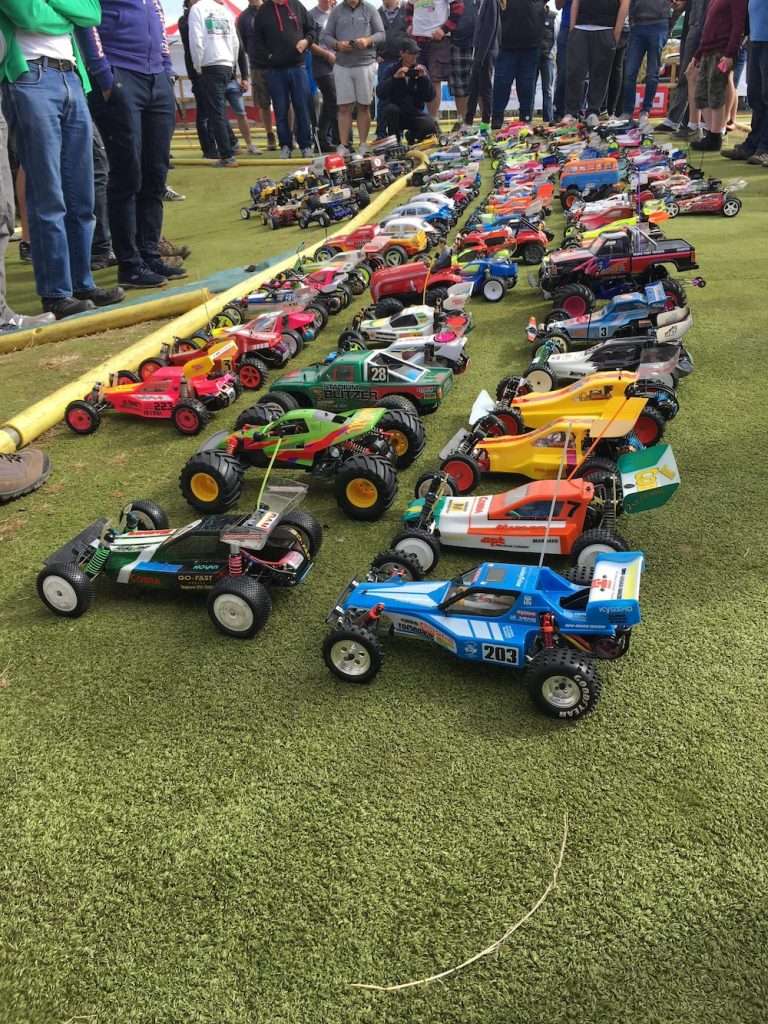
Choosing a Class and Scale to race
If you are decided on this already, you can skip to the next section: ‘things you will need for rc racing‘.
When starting out in Radio control car racing, you will need to decide on the class and scale you would like to race. Find out what types are popular at your local club if you don’t want to travel too far.
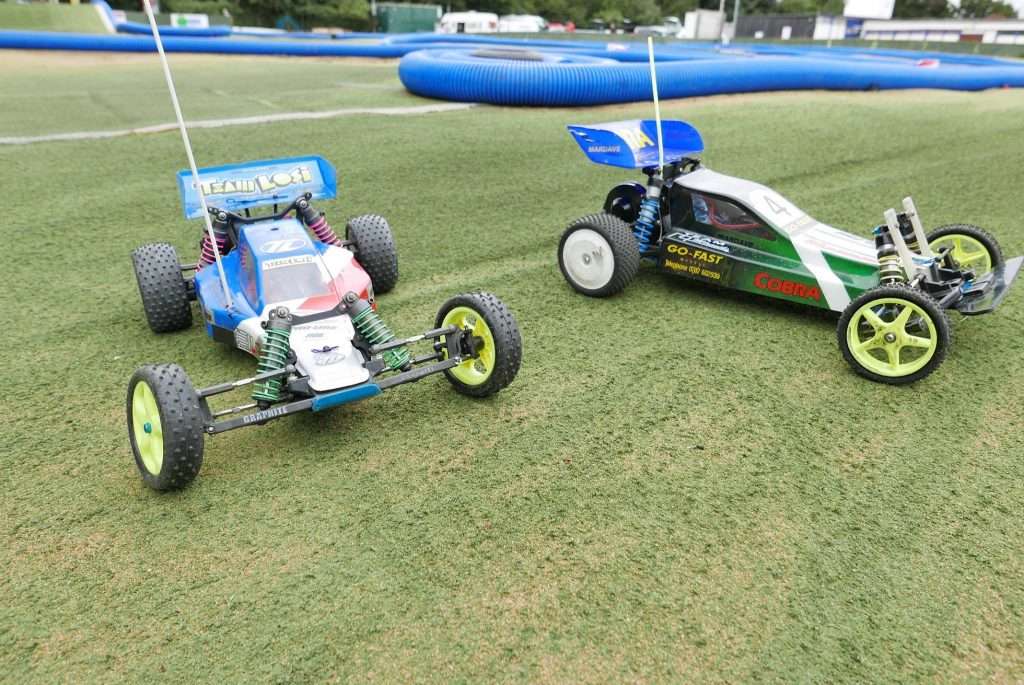
Examples of popular classes
The following examples of classes are divided between ‘on-road’ (racing on smooth tracks made of tarmac, carpet or similar) and off road (bumpy tracks with jumps made for buggies and trucks ).
Popular On-Road classes on tarmac or indoor carpet include, but are not limited to:
- Touring Cars
- GT10 & GT12
- Tamiya or Mardave Minis
- Stock Cars
- Tamiya Trucks
- Pan cars
- Formula 1
Popular Off-Road classes on grass, astroturf, asphalt, clay and indoor carpet include:
- Buggies 2WD & 4WD
- Stadium Trucks 2WD
- Short Course Trucks (SCT) 2WD & 4WD
- Rally Cross
- Vintage
There are many more classes – these are just a few examples.
Choose the Scale you want to race
The scale determines how many times smaller your RC car is when compared to a real life example. For example, a 1/10th scale touring car is 10 times smaller than the car in real life. Therefore, 1/8th scale would be larger than 1/10th.
Is RC Racing expensive?
Larger cars are generally more expensive to buy, and spare parts and tires cost more too, so if you are on a limited budget you may want to keep this in mind. 1/10th scale buggy tires cost a fraction of what 1/5th scale tires cost!
If you become a regular RC racer, you will be consuming lots of tires over time, especially if you want to be competitive. If you want to save money, the harder compound tires last longer but have less grip (sometimes desirable in very hot weather). The kind of track surface you choose to race on can also affect tire wear rate.
In the long run, I would say race fees and tires (and Nitro, if racing IC powered cars) are probably the most expensive aspects of RC racing, once you have paid the initial costs of the car and all the required gear. Replacing broken parts can start out expensive for an inexperienced driver, but the professional kits are very robust and, as your driving improves, you won’t break things as often, if at all.
Things you will need to start RC Racing
Other than the obvious – the RC car itself – you’ll need the following;
- Club Membership & Race Fees
- A Transponder (for timing)
- Pit box or hauler
- Picnic table/Pit table
- Tools
- Spares
- Ideally two or more battery packs
- Tires designed for the surface you plan to race on (Astroturf, Clay, Grass, Tarmac etc.)
- A way to charge batteries
Club Membership & Race Fees
BRCA or the relevant car association membership for your country
To race at club level you will normally, at the very minimum, need to be a BRCA member (or the equivalent association in your country if outside the UK).
This association membership includes insurance that covers if you (or someone else) gets hurt whilst you are racing at any club. It also covers using your rc car outside of clubs so is useful to have. As of 2019, the BRCA membership is £20.
Model car club membership
Joining your local club is optional, but worth it if you plan to race there often. Membership of a club will normally mean discounts on race fees, so it is worth joining up if you plan to race more than a few times a year at that particular club.
There are lots of benefits to being an rc car club member. The experienced racers will be able to help you and give you lots of advice, and there will be lots of opportunities to buy and sell used rc cars and parts at the club.
Race fees
Most clubs charge race fees to cover the rent and costs of the grounds that the car club is on. The race computer and software, lighting and other facilities at the club are all paid for by the race fees. They vary from club to club, so visit your club’s website or ask a member about race fees.
Transponders
What is a transponder and what does it do?
A transponder is a tiny transmitter that plugs into a servo port on your receiver. You’ll need one if you want to participate in races. Having one fitted will allow you to see your lap times, providing your club has a race timing computer and the relevant software.
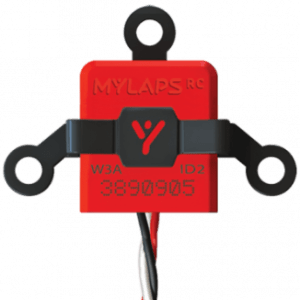
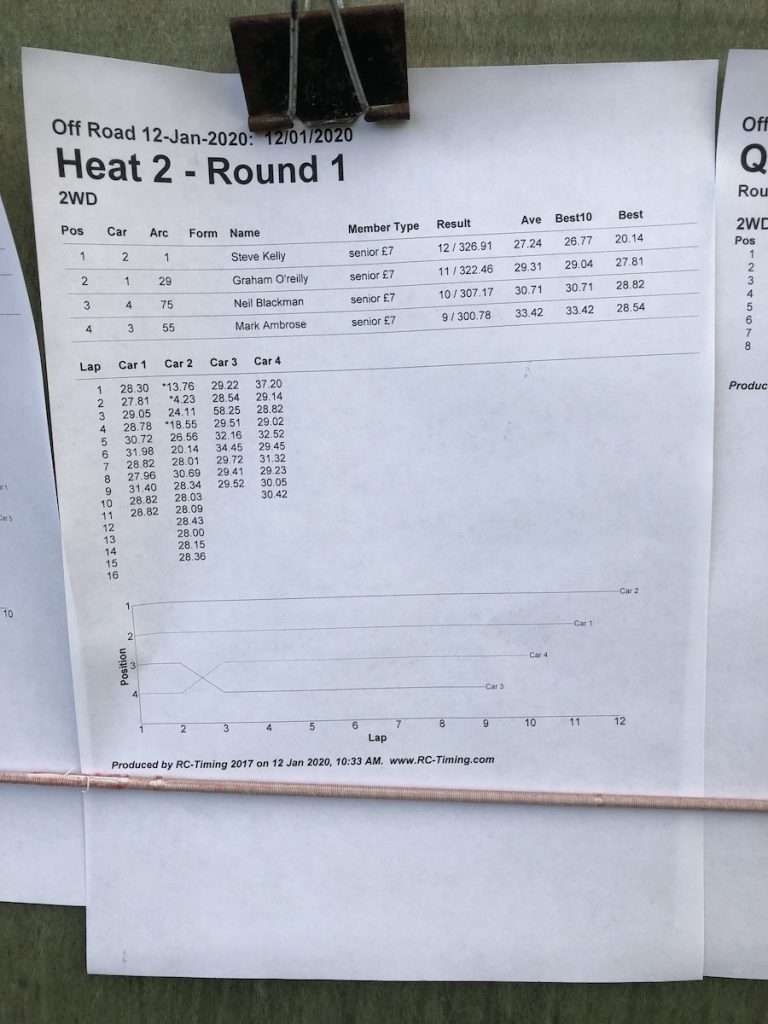
With a transponder fitted, your car will register each lap as it passes over the ‘loop’ at the race track. The loop is a section on the track with a small antenna wire running under or over it that receives the car’s transponder signal as it passes. Race timing software on a computer in the timing hut will log those laps to your transponder number.
Some clubs will let you participate in the race without a transponder, but your positions and lap times won’t be registered so you wont be able to win. For me, half the fun in racing is seeing how I can improve on my previous best lap times.
A transponder simply plugs into a spare Channel on your receiver. You’ll need to ensure your receiver has the extra channel slot; a three or four channel receiver is ideal. A transponder has a serial number assigned to it (sometimes written on the top, or in the paperwork). You tell this to the race controller at the beginning of the day so that they can get your transponder number registered on the computer system.
Transponders are quite affordable and start at around £40 for an MRT clone, and around double for the ‘MyLaps’ brand. With the cheaper clone, you don’t have a unique transponder number, but it is uncommon for someone to turn up at the track with the same number as you. If it happens, you have an alternative number that you can select on MRT type clones.
You will need to speak to your club to find out what transponders are compatible with their race timing software.
Pit box and Haulers
If you are going to be racing, you will need a pit box or hauler to store your racing gear such as tools and spares. Ideally , you will want one with wheels, especially if you are racing at tracks where the car park is some distance from the pitting area.
Pit Table / Picnic Table
Some clubs have purpose built pitting tables, but for the clubs that do not provide these, a foldable picnic table is what most racers use. If you are going to race at many different tracks, your own pit table is essential.
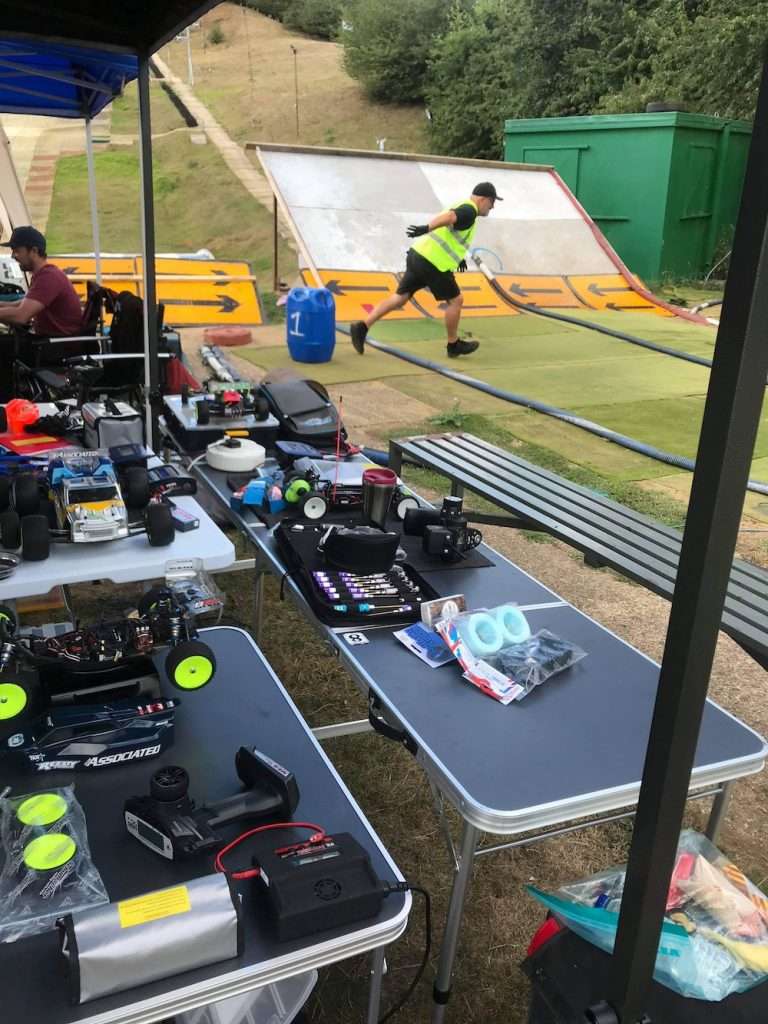
RC Racing Tools
You’ll need RC racing tools to carry out repairs and perform maintenance on your RC car. Eventually, as you learn more about the hobby, you will be doing lots of this at the trackside; especially when tuning and adjusting your car for racing at different tracks.
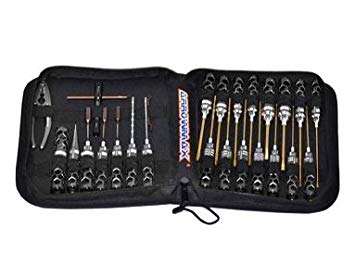
At the very minimum, you’ll want nut drivers and hex/allen drivers to get started. You’ll be able to swap wheels quickly, or make quick adjustments with decent tools.
Later you may also want other specialist tools such as a ‘ride height gauge’ and ‘digital callipers’, but these are not totally necessary for a beginner – once you learn more about tuning, you can look into getting these.
Professional RC Car Kits usually include basic hex/allen tools so you can complete the kit. If you are taking RC racing up as a long term hobby, do yourself a favour and invest in some good quality RC Tools. Quality tools are quicker and easier to use, will put less strain on your hands, and your RC nuts and hex screws will last longer. High quality RC tools will last you a lifetime, and the ones that do wear can normally have the tips replaced.
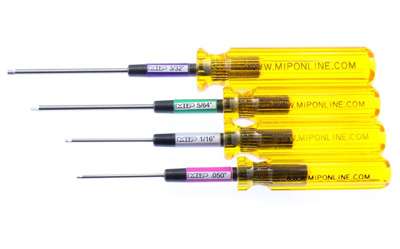
Good Brands to look at are Arrowmax, HUDY, EDS, and my favourite – MIP tools. MIP are very expensive, but are built to last.
Spares
When starting out you will probably break a few things in crashes on the track. This is especially true with cheaper ready to run cars, because the parts are not so durable. The items you’ll need to stock up on will depend a little on the track type, but in general, front wishbones/arms, a front shock tower and front bulkhead are all commonly broken parts in off-road racing. On-road is a little different.
Ask at your track what parts are commonly broken on the car type and brand you are using.
Batteries
If you are racing electric, then investing in two RC car batteries would be good to start with; you can have one on charge while using the other.
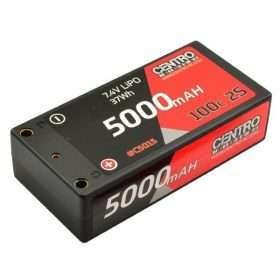
Your fellow club members should be able to give good advice on batteries. A higher capacity will be more useful for racing, because you can often get two races out of one charge.
What Tires for RC racing?
It is often said that tires are the most important part of set up, so getting these right is absolutely vital if you want to be competitive.
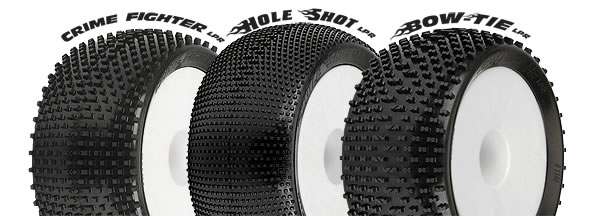
The best thing you can do when starting out is ask other experienced racers what tires they use for the particular track.
Alternatively, experiment with what you already have to see what works. As a beginner you may not notice much difference, but, after enough practice, checking your consistent lap times will tell you what is better.
Grip conditions can change drastically from day to day, and even throughout the day as the temperature or humidity change. If you don’t have enough grip, you’ll be spinning out and slow getting around the track. Too much grip and the car may roll over (grip or traction roll) – also costing you lots of time.
You’ll need a selection of tyres for racing in dry and wet conditions if racing outdoors. If you plan to race at other tracks, you will benefit from keeping a selection of different tread patterns and different compounds in your pit box. Find out what the veteran racers at the track use, and you wont go far wrong.
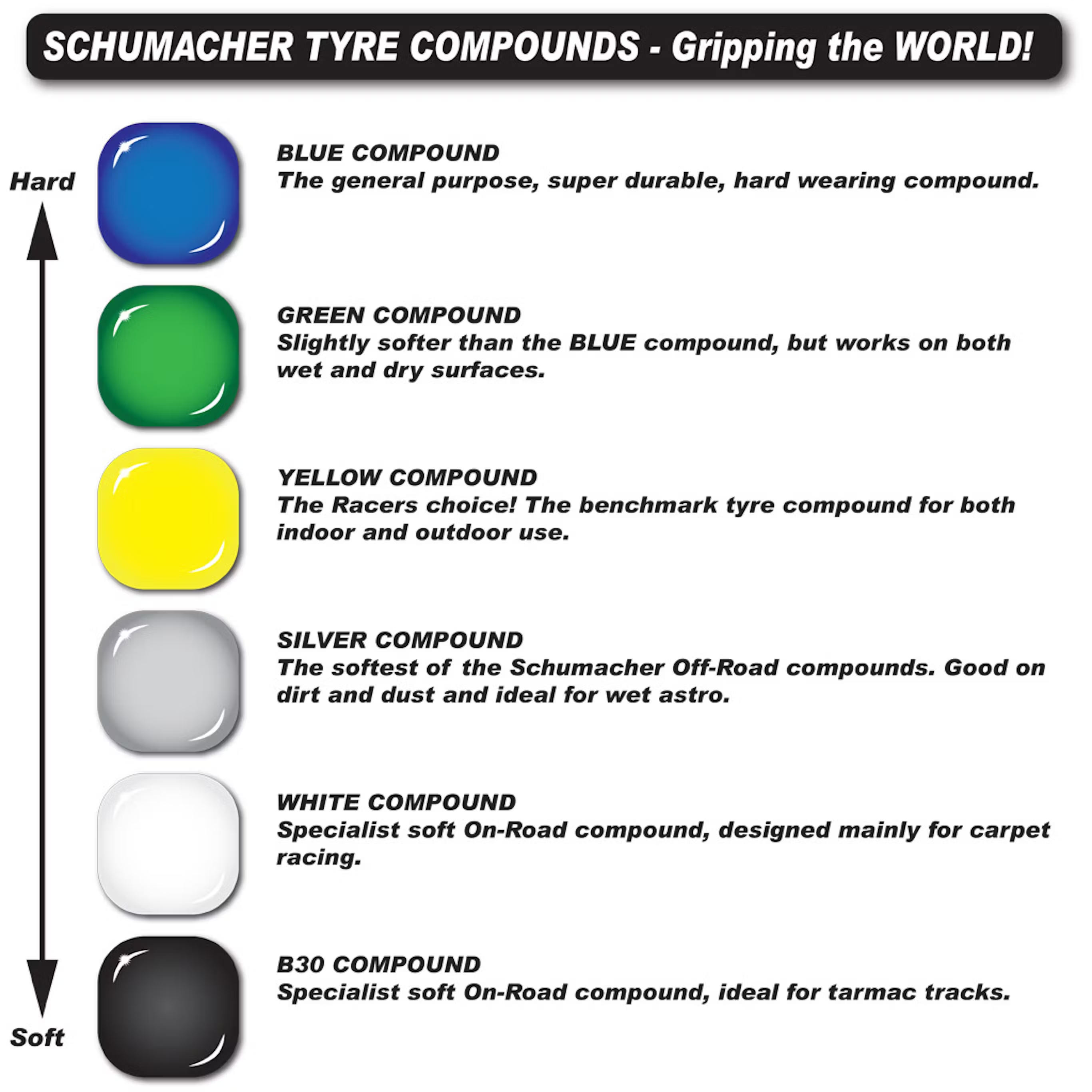
A way to charge batteries at the track
Some clubs offer power in the pitting area, but if they do not you will need a way to charge your batteries. These are the options:
- 12v leisure battery
- petrol generator with inverter
- charge from your 12v car battery
Another alternative is to take 5 batteries fully charged for the day – this will give you enough for the common race format of three qualifying rounds and one final, plus you’ll have a spare for practice.
What’s next?
So now you have an idea of what you need to get started in RC Car racing. The next article’s focus is on a typical club level race day to give you an idea of what to expect.
